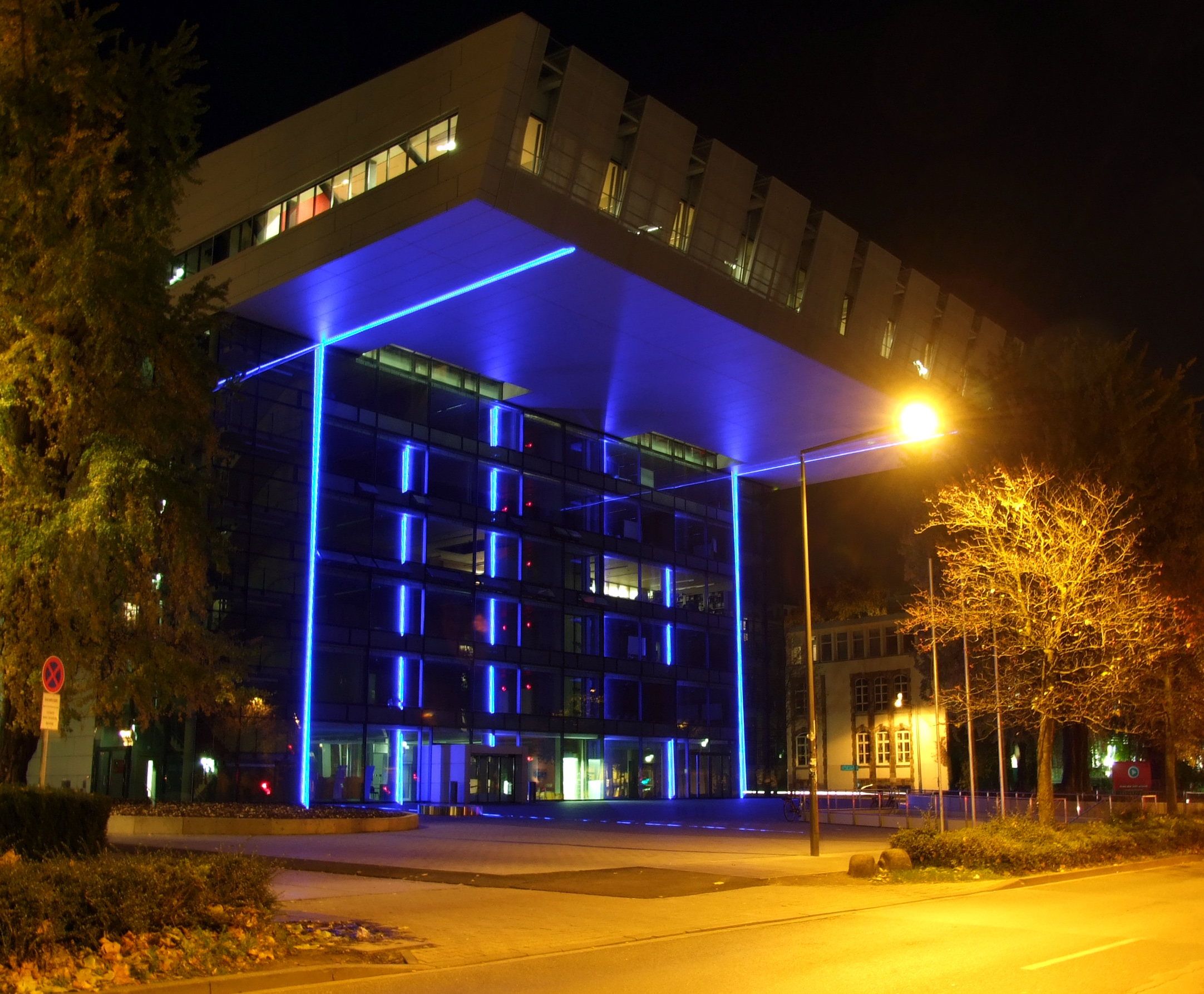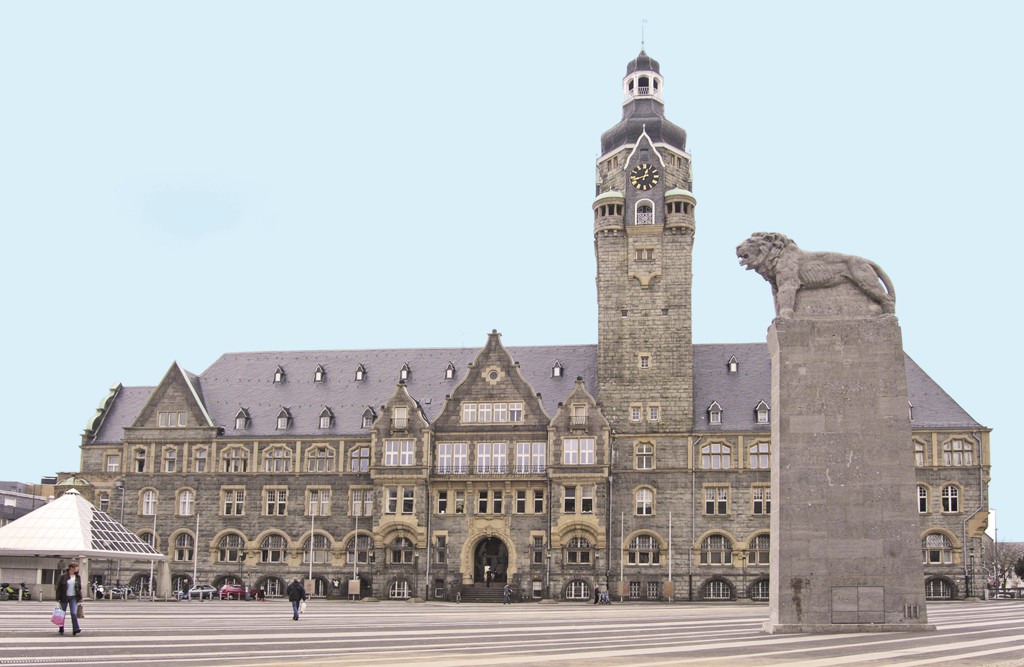|
Willi Kalender
Willi A. Kalender (born 1 August 1949) is a German medical physicist and professor and former chairman of the Institute of Medical Physics of the University of Erlangen-Nuremberg. Kalender has produced several new technologies in the field of diagnostic radiology imaging. Kalender is a Fellow of the American Association of Physicists in Medicine (AAPM) and Honorary Fellow of the British Institute of Radiology (BIR) and of the Institute of Physics and Engineering in Medicine (IPEM). Kalender was also elected a member of the National Academy of Engineering (2016) for the development of spiral computed tomography methods that enable modern high-speed 3D medical imaging with X-rays. Education Kalender started his studies in physics and mathematics at the University of Bonn, Germany. He completed his master's and Ph.D. degree in medical physics at the University of Wisconsin in 1974 and 1979, respectively. In 1988 he completed all postdoctoral lecturing qualifications (Habilitation) at ... [...More Info...] [...Related Items...] OR: [Wikipedia] [Google] [Baidu] |
University Of Erlangen-Nuremberg
A university () is an institution of higher (or tertiary) education and research which awards academic degrees in several academic disciplines. Universities typically offer both undergraduate and postgraduate programs. In the United States, the designation is reserved for colleges that have a graduate school. The word ''university'' is derived from the Latin ''universitas magistrorum et scholarium'', which roughly means "community of teachers and scholars". The first universities were created in Europe by Catholic Church monks. The University of Bologna (''Università di Bologna''), founded in 1088, is the first university in the sense of: *Being a high degree-awarding institute. *Having independence from the ecclesiastic schools, although conducted by both clergy and non-clergy. *Using the word ''universitas'' (which was coined at its foundation). *Issuing secular and non-secular degrees: grammar, rhetoric, logic, theology, canon law, notarial law.Hunt Janin: "The university ... [...More Info...] [...Related Items...] OR: [Wikipedia] [Google] [Baidu] |
American Association Of Physicists In Medicine
The American Association of Physicists in Medicine (AAPM) is a scientific, educational, and professional organization of Medical Physicists. In 2011, it absorbed the American College of Medical Physics Their headquarters are located at 1631 Prince Street, Alexandria, Virginia. Publications include two scientific journals ''Medical Physics'' and the ''Journal of Applied Clinical Medical Physics'' (JACMP), as well as technical reports, and symposium proceedings. The purposes of the American Association of Physicists in Medicine are to promote the application of physics to medicine and biology and to encourage interest and training in medical physics and related fields. AAPM has established ''Medical Physics'' as its primary scientific and informational journal. AAPM is a Member of the American Institute of Physics and has over 8000 members. Regional chapters of the AAPM hold regular scientific meetings for their members. For example the New England Chapter typically meets three ... [...More Info...] [...Related Items...] OR: [Wikipedia] [Google] [Baidu] |
People From Erlangen
A person ( : people) is a being that has certain capacities or attributes such as reason, morality, consciousness or self-consciousness, and being a part of a culturally established form of social relations such as kinship, ownership of property, or legal responsibility. The defining features of personhood and, consequently, what makes a person count as a person, differ widely among cultures and contexts. In addition to the question of personhood, of what makes a being count as a person to begin with, there are further questions about personal identity and self: both about what makes any particular person that particular person instead of another, and about what makes a person at one time the same person as they were or will be at another time despite any intervening changes. The plural form "people" is often used to refer to an entire nation or ethnic group (as in "a people"), and this was the original meaning of the word; it subsequently acquired its use as a plural form of per ... [...More Info...] [...Related Items...] OR: [Wikipedia] [Google] [Baidu] |
Living People
Related categories * :Year of birth missing (living people) / :Year of birth unknown * :Date of birth missing (living people) / :Date of birth unknown * :Place of birth missing (living people) / :Place of birth unknown * :Year of death missing / :Year of death unknown * :Date of death missing / :Date of death unknown * :Place of death missing / :Place of death unknown * :Missing middle or first names See also * :Dead people * :Template:L, which generates this category or death years, and birth year and sort keys. : {{DEFAULTSORT:Living people 21st-century people People by status ... [...More Info...] [...Related Items...] OR: [Wikipedia] [Google] [Baidu] |
Garmisch-Partenkirchen
Garmisch-Partenkirchen (; Bavarian: ''Garmasch-Partakurch''), nicknamed Ga-Pa, is an Alpine ski town in Bavaria, southern Germany. It is the seat of government of the district of Garmisch-Partenkirchen (abbreviated ''GAP''), in the Oberbayern region, which borders Austria. Nearby is Germany's highest mountain, Zugspitze, at above sea level. The town is known as the site of the 1936 Winter Olympic Games, the first to include alpine skiing, and hosts a variety of winter sports competitions. History Garmisch (in the west) and Partenkirchen (in the east) were separate towns for many centuries, and still maintain quite separate identities. Partenkirchen originated as the Roman town of ''Partanum'' on the trade route from Venice to Augsburg and is first mentioned in the year A.D. 15. Its main street, Ludwigsstrasse, follows the original Roman road. Garmisch was first mentioned some 800 years later as ''Germaneskau'' ("German District"), suggesting that at some po ... [...More Info...] [...Related Items...] OR: [Wikipedia] [Google] [Baidu] |
British Institute Of Radiology
The British Institute of Radiology (BIR) is a radiology society and charity based in London, United Kingdom. It is the oldest institute of its kind in the world, forming on 2 April 1897. History The society can be traced back to two separate institutes, "The X-Ray Society" in April, 1897, and "The Röntgen Society"; both were formed in the wake of the discovery of X-rays by Wilhelm Röntgen in 1895. The latter was founded by Dr John Macintyre in 1897. He had been the first person in Britain to use X-rays, using equipment created by William Thomson, Lord Kelvin at Glasgow Royal Infirmary on 5 February 1896. The formalisation of the BIR occurred in 1927 upon the merger of the two societies. The BIR became a registered charity in 1963. Among other publications, the BIR publishes several journals including the ''British Journal of Radiology'' (BJR), and ''Dentomaxillofacial Radiology'' (the official journal of the International Association of Dentomaxillofacial Radiology, IADMF ... [...More Info...] [...Related Items...] OR: [Wikipedia] [Google] [Baidu] |
University Of Zurich
The University of Zürich (UZH, german: Universität Zürich) is a public research university located in the city of Zürich, Switzerland. It is the largest university in Switzerland, with its 28,000 enrolled students. It was founded in 1833 from the existing colleges of theology, law, medicine which go back to 1525, and a new faculty of philosophy. Currently, the university has seven faculties: Philosophy, Human Medicine, Economic Sciences, Law, Mathematics and Natural Sciences, Theology and Veterinary Medicine. The university offers the widest range of subjects and courses of any Swiss higher education institution. History The University of Zurich was founded on April 29, 1833, when the existing colleges of theology, the ''Carolinum'' founded by Huldrych Zwingli in 1525, law and medicine were merged with a new faculty of Philosophy. It was the first university in Europe to be founded by the state rather than a monarch or church. In the university's early years, the 183 ... [...More Info...] [...Related Items...] OR: [Wikipedia] [Google] [Baidu] |
Academy Of Sciences Leopoldina
The German National Academy of Sciences Leopoldina (german: Deutsche Akademie der Naturforscher Leopoldina – Nationale Akademie der Wissenschaften), short Leopoldina, is the national academy of Germany, and is located in Halle (Saale). Founded on January 1, 1652, based on academic models in Italy, it was originally named the ''Academia Naturae Curiosorum'' until 1687 when Emperor Leopold I raised it to an academy and named it after himself. It was since known under the German name ''Deutsche Akademie der Naturforscher Leopoldina'' until 2007, when it was declared to be Germany's National Academy of Sciences. History ' The Leopoldina was founded in the imperial city of Schweinfurt on 1 January 1652 under the Latin name sometimes translated into English as "Academy of the Curious as to Nature." It was founded by four local physicians- Johann Laurentius Bausch, the first president of the society, Johann Michael Fehr, Georg Balthasar Metzger, and Georg Balthasar Wohlfarth; and ... [...More Info...] [...Related Items...] OR: [Wikipedia] [Google] [Baidu] |
European Society Of Radiology
The European Society of Radiology (ESR) is an international medical society based in Vienna, Austria dedicated to the promotion and coordination of scientific, philanthropic, intellectual and professional activities of radiology in Europe. In addition to various other activities, the ESR serves as an umbrella organisation for European radiologists, organises the annual European Congress of Radiology (ECR) and coordinates the publication of European Radiology, a monthly peer-reviewed medical journal. Additionally, the ESR pilots the harmonisation of teaching programmes throughout Europe with various activities and initiatives. History Founded in 2005, the European Society of Radiology (ESR) was created through the merger of two established radiological societies; the European Association of Radiology (EAR), a federation of national radiological societies founded in 1962, and the European Congress of Radiology (ECR), the organising body of the eponymous congress which was first hel ... [...More Info...] [...Related Items...] OR: [Wikipedia] [Google] [Baidu] |
RWTH Aachen University
RWTH Aachen University (), also known as North Rhine-Westphalia Technical University of Aachen, Rhine-Westphalia Technical University of Aachen, Technical University of Aachen, University of Aachen, or ''Rheinisch-Westfälische Technische Hochschule Aachen'', is a German public research university located in Aachen, North Rhine-Westphalia, Germany. With more than 47,000 students enrolled in 144 study programs, it is the largest technical university in Germany. In 2018, the university was ranked 31st in the world university rankings in the field of engineering and technology, and 36th world-wide in the category of natural sciences.Daten & Fakten – RWTH AACHEN UNIVERSITY – Deutsch Rwth-aachen.de (12 December 2011). Retrieved on 2013-09-18. [...More Info...] [...Related Items...] OR: [Wikipedia] [Google] [Baidu] |
Remscheid
Remscheid () is a List of cities and towns in Germany, city in North Rhine-Westphalia, Germany. It is, after Wuppertal and Solingen, the third-largest municipality in Bergisches Land, being located on the northern edge of the region, on the south side of the Ruhr area. Remscheid had around 109,000 inhabitants in 2015. At the end of 2019 it had 113,703 inhabitants. Geography Remscheid comprises four boroughs, ''Alt-Remscheid'', ''Remscheid-Süd'', ''Lennep'', and Lüttringhausen. Its highest point is the Brodtberg (378 m). History Remscheid was founded in the 12th century, but remained a small village until the 19th century. Early spellings for the city included ''Remissgeid'' (1217), ''Rymscheyd'' (1351), ''Reymscheyd'' (1487) and ''Rembscheid'' (1639). The economic growth of the entire Rhine-Ruhr region led to an increase of the population of Remscheid. Mechanical engineering and toolmaking were the main industries practised within the town. This is carried on today with the H ... [...More Info...] [...Related Items...] OR: [Wikipedia] [Google] [Baidu] |
_1938.jpg)




